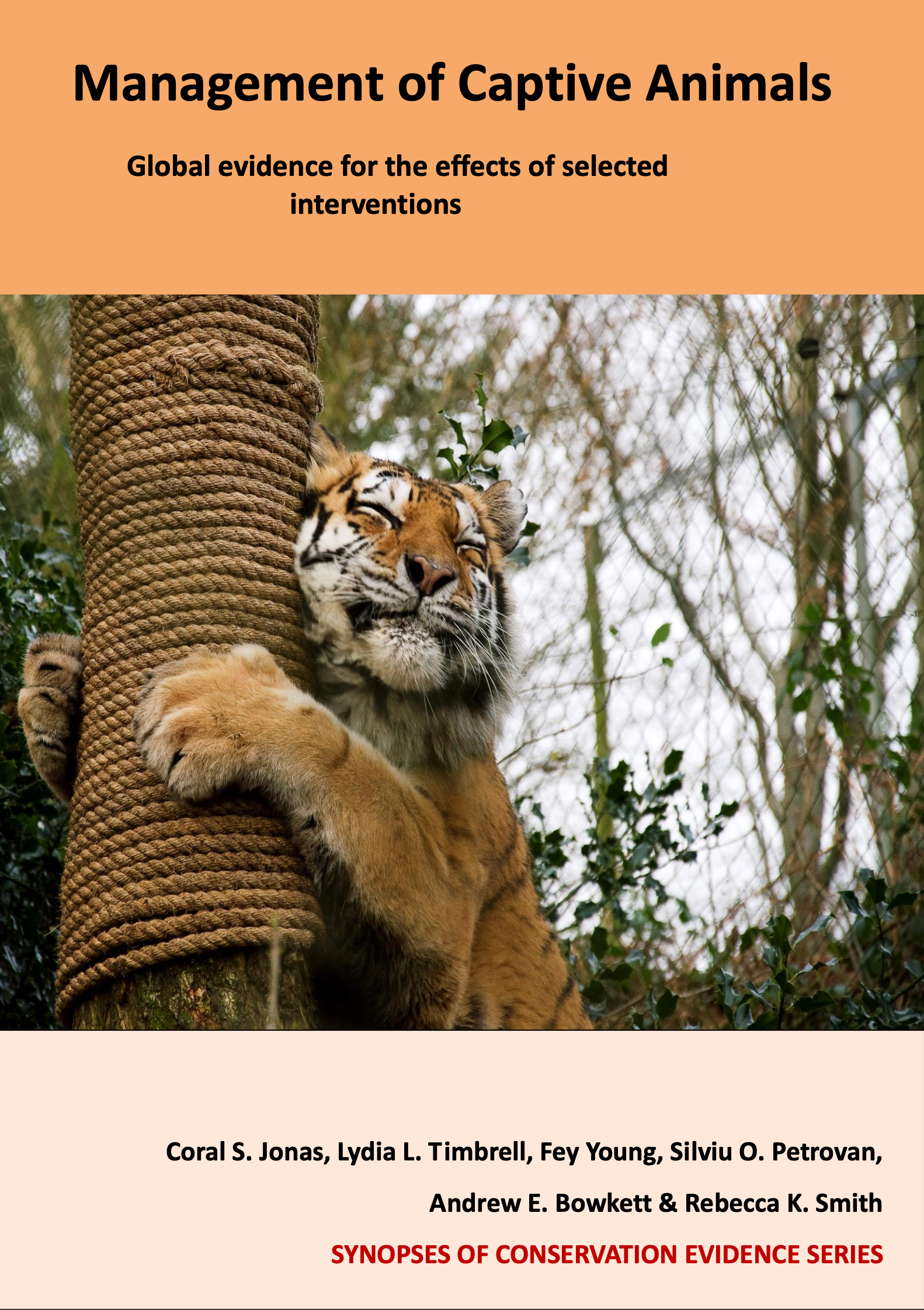Carnivores: Allocate fast days
-
Overall effectiveness category Unknown effectiveness (limited evidence)
-
Number of studies: 1
View assessment score
Hide assessment score
How is the evidence assessed?
-
Effectiveness
6% -
Certainty
25% -
Harms
50%
Study locations
Supporting evidence from individual studies
A replicated, before-and-after study in 1994 of jaguars Panthera onca, leopards P. pardus and snow leopards P. uncia in a zoo in the UK [1] found that felids fed once every three days paced more on non-feeding days than on feeding days. Percentage of total scans spent pacing was higher in non-feeding days (jaguar: 11–18; leopard: 8–18; snow leopard: 8–11) than in feeding days (jaguar: 3; leopard: 4–7; snow leopard: 1–2). Eight felids (two jaguars, three leopards and three snow leopards) were observed using instantaneous scan sampling every 15 minutes during four 1-hour sessions each day (total 560 scans per enclosure). Felids were fed every third day.
Study and other actions tested
Where has this evidence come from?
List of journals searched by synopsis
All the journals searched for all synopses
This Action forms part of the Action Synopsis:
Management of Captive Animals
Management of Captive Animals - Published 2018
Captive Animal Synopsis





)_2023.JPG)














